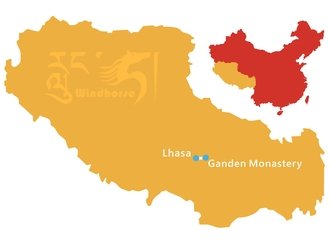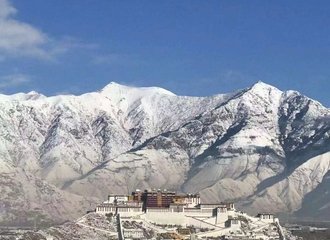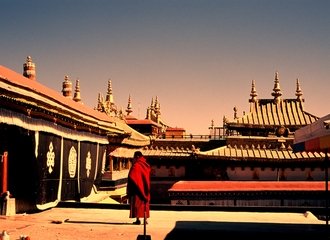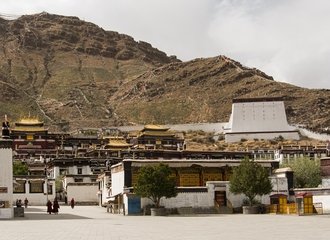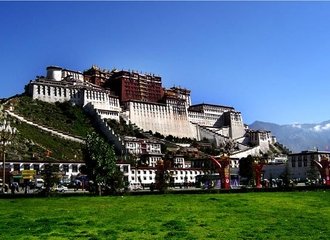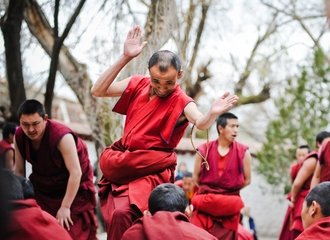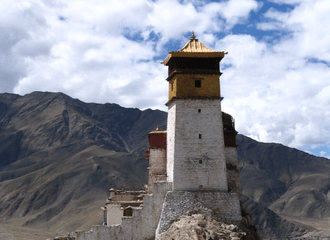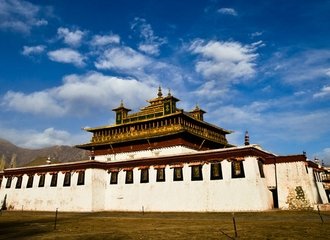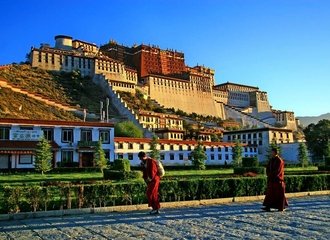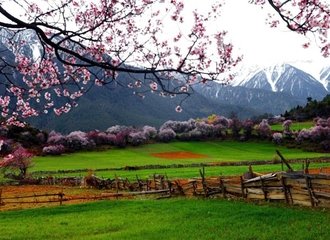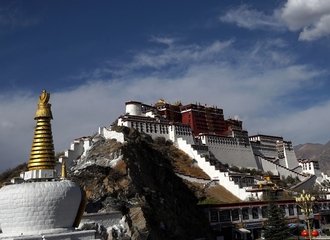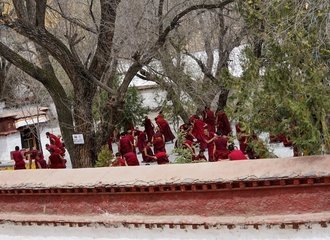How to plan a Trekking in Tibet
With an average altitude of 4,500 meters (14,764ft) and an extreme climate, trekking in Tibet tend to be challenging and adventurous, but the chance to see some of the world's most remote and untouched corners makes the trekking Unique rewards. For ambitious hikers/trekkers, there is no doubt that Tibet will be sure to perfectly match any of their desires.
Honored as the 'roof of the world', with several dozens of the world's tallest snow-capped mountains, beautiful glaciers, vast plateau plains, deep valleys, turquoise lakes, Tibet offers breathtaking high-altitude trek routes. Trekking there, you will not only improve your fitness and challenge yourselves but also have a visual feast with exotic natural beauty.
Known as 'the 3rd pole of the world', Tibet, especially its remote areas during the trekking where the local Tibetans still follow their traditional lifestyle for many generations, is untouched by many travelers. You will have a chance to get a close interaction with the locals to experience their unique lifestyle and learn about their customs.
As a spiritual, historical, and cultural place, Tibet is also a place with magnificent Buddhist monasteries, colorful prayer flags embellished the mountains, massive historical sites, and cliffside retreats, drawing hundreds and thousands of travelers or trekking enthusiasts every year to learn about different cultures and get their mind purified.
Table of Contents:
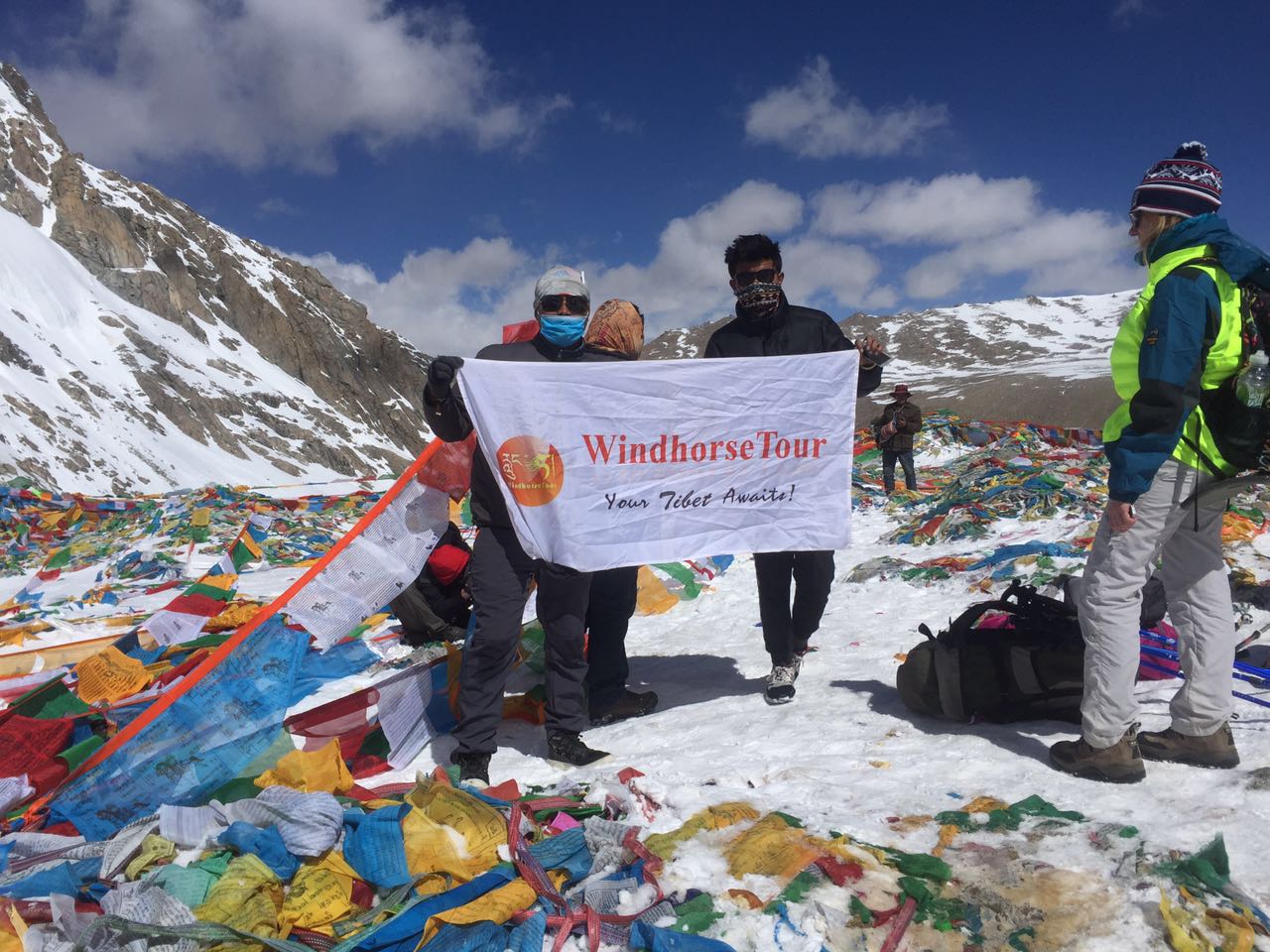
When to trek to Tibet:
Generally, the best time to trek in Tibet is from late April to October. The weather in those months is warmer and suitable for trekkers, but due to its high altitude, weather there is always changeable and unpredictable, you should always aware that different weather might appear alternatively on the same day!
Late April to June is an excellent time for trekking in Tibet, it has warm and stable weather. With less rain and snowfall, there are lots of sunny days with clear blue sky and puffy white clouds.
July and August are the warmest months of the year across the Tibetan Plateau, the mountains/valleys are in an amazing color of green, the landscapes are at their best shape among all the seasons. It is also a great time to visit local Tibetan nomad families in their yak wool tents along some of the trekking trails. However, those two months are also considered as the rainy season in Tibet, it may not receive as much as what Nepal at the south side of the Himalayas receives, but it does rain in Tibet during the summer. It won’t rain every day, but it will rain a few days each week in most regions. Even though it does rain, it is still possible to trek in Tibet during the summer, just make sure that you have good preparation for it, the rainfall would make the hiking harder, the trails might be muddy or hard to follow.
September and October are ideal to trek in Tibet as well. The retreat of the southeast monsoon and the unarrived of the northwest cold wave of this period brings sunny days with temperatures above freezing and high visibility, clear and crisp nights.

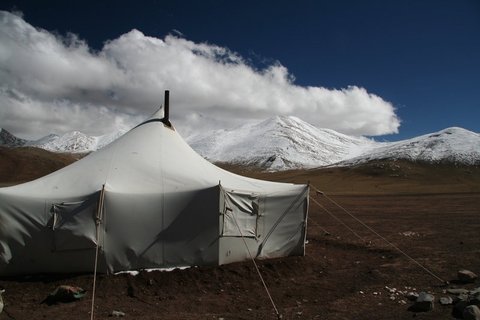
All you need to know about the trekking in Tibet:
1. Trekking in Tibet requires good fitness and preparation, strong perseverance
As a remote and rugged area at the roof of the world combined with extreme weather, even a day hiking in Tibet requires the trekkers to have abundant survival skills and strong perseverance. Besides, trekking in Tibet requires good physical fitness and careful preparation too.
We would not advise the beginners to attempt trekking in Tibet as it requires the trekker to have at least some multi-day hiking experience or, ideally, have high-altitude regions trekking experience before trekking in Tibet.
Trekking at remote regions over 4,000 meters (13,123ft), it is important to keep fit for your Tibet treks. When planning your trip to Tibet, it is highly recommended to consult your doctor for advice, if necessary have a physical examination to check your physical fitness.
Besides, start your physical fitness program several months in advance. Walking or hiking over rugged areas regularly is the best way to prepare for this trek. However, you should avoid sudden and extreme exercises that can cause physical damage. Regular sessions of periodic aerobic exercises, especially running, swimming, and bicycling, are beneficial to help you better adapt to the high altitude.
Trekkers should prepare carefully and pack well for the extreme weather. The weather can change quickly, especially in the mountain area with a higher altitude, it might be rainy, sunny, snowing alternately on a single day. Even in the warmest July and August, the night temperatures above 4700m can drop below freezing, but the scorching sun in the day can make the day temperature nearly unbearable. Trekking in Tibet, you should bring clothes for different seasons and consider dressing in layers to put on/take off easily.
Furthermore, due to the bad transportation there and the unavailable emergency helicopter rescue service while trekking, it usually takes long journeys to get outside help or to the lower altitudes. If someone is sick or injured, they will be carried or ride an animal to the nearest road for evacuations. Therefore, it is really necessary to carry a well-supplied first-aid kit for emergency treatment while injured or suffering acute illnesses.
In addition, as of its strong UV rays and dry and thin air, people traveling in Tibet are vulnerable to sunburn, so it is extremely necessary to bring lip balms, hand lotion, moisturizing cream, sun cream, sun hat, and sunglasses to take care of your skin and prevent yourself from the sunburn.
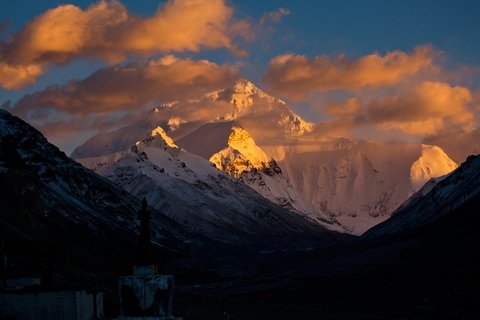
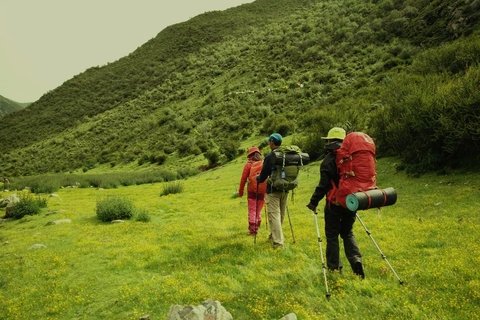
2. Trekking Itinerary suggestion:
Trekking in Tibet, the world’s highest plateau with such a high altitude, you should plan a reasonable itinerary following the gradually ascending rule to avoid high-altitude sickness.
- In order to better acclimatize the altitude before embarking on a trek, we would highly recommend having a 2-3 days leisure tour in Lhasa city.
- It is advisable to add an extra day hiking in Lhasa before the longer distance trekking tour to test if you are physically and psychologically well-prepared. You may consider a day hike to Phabongkha Hermitage or Ganden Kora.
Besides, it could be a good idea to budget 1 extra day for your trekking in case getting on the road slower than expected.
Lastly, it is highly recommended to have a backup travel plan. You should always prepare that the trekking could be canceled if meeting the extreme weather or the road is blocked.
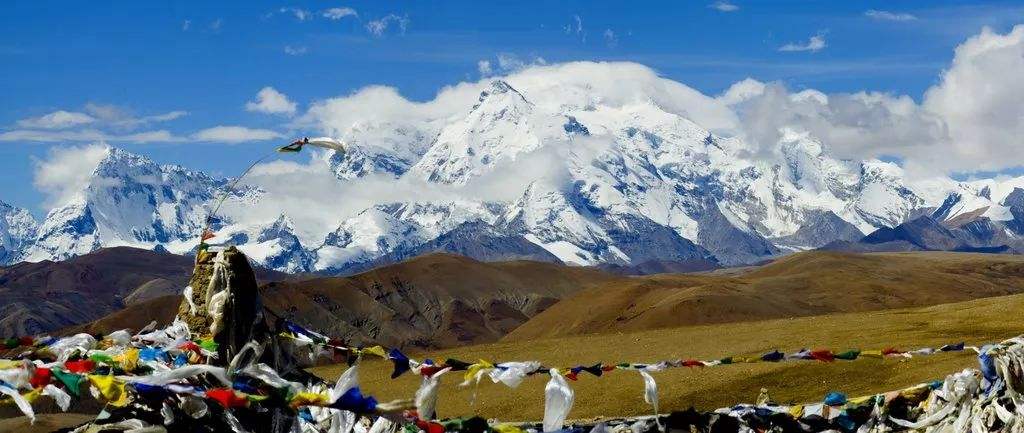
3. Food & Drink on the trek
- Food:
Trekking in the remote areas of Tibet, there is not too much food to eat, almost no restaurants can be found along the trekking trail, only very few guesthouses or nomad families offer simple local meals such as Tsamba, fried-rice, etc. In case you are not a big fan of the local cuisine or even no food can be found to eat on the trail, you should be self-sufficient with your preferable food.
With the development of Tibet, especially Lhasa, a large scale of stores and several supermarkets are opened to sell a huge variety of foodstuffs, such as chocolates, high-energy bars, meat, instant noodles, vegetables, biscuits and fruits, butter, vegetable oil, and oatmeal, etc., making it possible to have well-balanced and tasty meals during the trekking. During the trekking, if you don’t want to cook by yourself and there are no eateries or local families, you may buy enough fast food before the trek or hire a cook to be with you.
- Drink:
Local Tibetans are used to drinking yak butter tea and sweet tea to fight against the severe cold and dry weather, and these drinks are available in monasteries, guesthouses, or local homes on the trail, but, due to its distinct flavor, it might not suit everyone's taste.
Do not attempt to drink directly from natural streams even as clear as much of the water in Tibet is since it can contain some contaminants and natural impurities. The boiled water is available in the monasteries or guesthouses for drinking. However, if you have a weak stomach, it’s better to drink bottled mineral water as the water boils at a lower temperature in the high elevations. The bottled mineral water, Chinese green tea, and instant coffee can be bought in Lhasa or some other cities in Tibet.
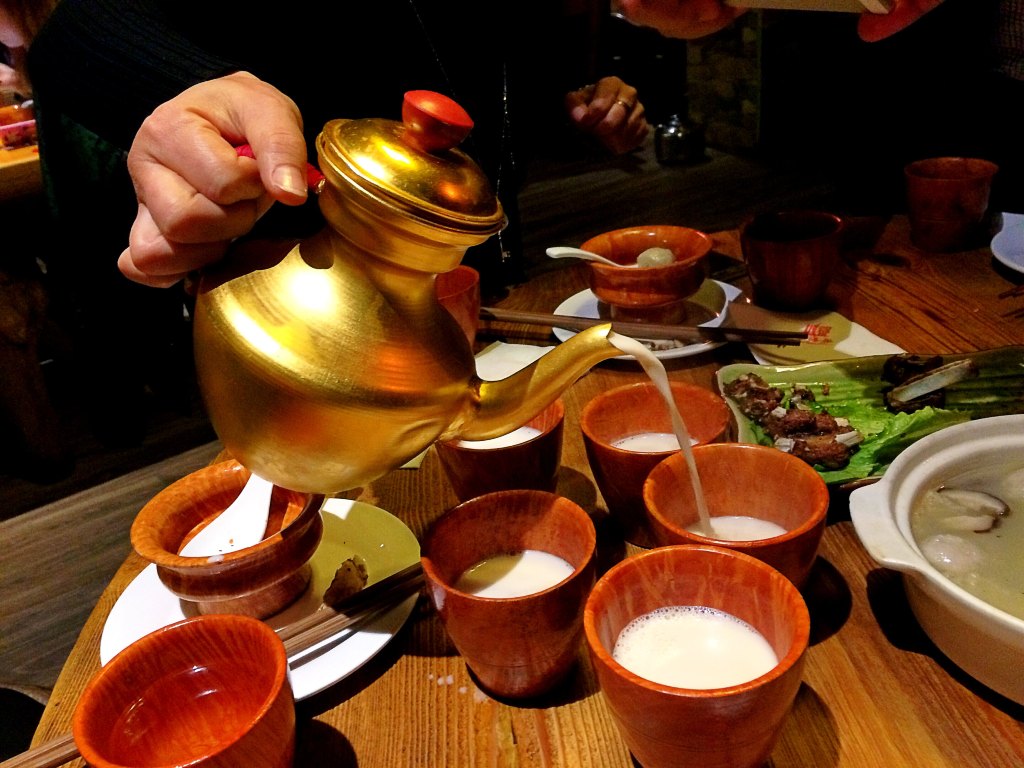
4. Guide & Pack Animals on the trek
For overseas travelers traveling in Tibet, based on the current policy, a licensed tour guide must be arranged to accompany you, but actually, it is really necessary as the guide can help you in lots of ways, including arranging accommodation and meals for you, sharing knowledge of natural history and Tibetan culture, and leading you to follow the right trekking trail, offering emergency assistance if injured or suffering illness. The cost of an experienced guide is generally included in the tour package.
To better assist our clients, the guides that we WindhorseTour usually arrange for our clients are local Tibetan English-speaking tour guides. They are quite experienced guides with abundant knowledge of local Tibetan culture, wild survival skills, emergency situations handling such as injured or suffering high-altitude sickness while trekking, in addition, they are familiar with the trekking route too.
The rugged terrain, high altitude, and long distances of Tibet make most trekkers think twice about the way to carry their gear, hiring yaks or horses to do the heavy work should be a good choice to reduce the burden on your shoulders, making the trekking easier and more enjoyable.
Generally, yaks or horses are available to hire at the nearest villages to where your trek begins. Normally, we would recommend you to hire one or more yaks or horses and a yak keeper or horseman. Usually, each yak can carry about 30-40KG's luggage, and one yak man can tend up 3 yaks, but for each horse, it requires its own keeper. However, the yaks have no nose rings and can’t be led by rope, so don’t expect that they will remain on a trial unless they’re following another yak, thus, even if you have a small group and only need one yak, you have to hire two still.
The cost of packing animals varies widely according to the location. Generally, it is the most pricey to hire horses and yaks at Mt. Kailash, costing up to CNY¥350 per animal per day, CNY¥ 300 per yak keeper or horseman per day, and a total of 3 days’ fee will be charged. The daily cost of hiring packing animals in most other places is much less, it costs about CNY¥180 per head per day, while the cost of a yak keeper or horseman is usually about CNY¥180 per day, please remember that you are also required to pay for the time that it takes them to return home.
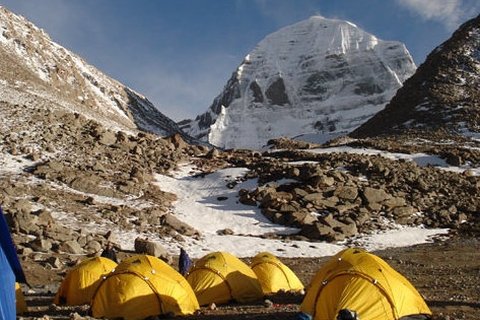
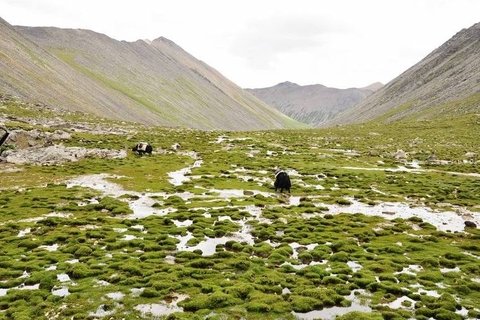
5. Tibet Travel policies/regulations
As a sensitive region in China, since 2008, independent travel is not permitted while traveling in Tibet. Overseas travelers need to prearrange and book a tour with a licensed guide and private vehicle through a travel agency.
Besides, as it is widely acknowledged that, to enter and travel in Tibet, not only a basic China visa but also the Tibet permit is required. Traveling in central Tibet, you only need to have the basic Tibet Entry Permit, while for the travel to Shannan Prefecture, Mt. Everest region, etc, you still need Aliens' Travel Permit. For the exploration at Nagri Prefecture e.g. Mt. Kailash, it requires not only the basic Tibet Entry Permit but also Aliens' Travel Permit and Military Permit.
As an over 10 years’ travel agency has helped thousands of clients to make their once a lifetime trip to Tibet come true. We WindhorseTour are confident to tailor-make your Tibet tour and help you to obtain all the necessary Tibet permits by submitting the application at least 2 weeks in advance.
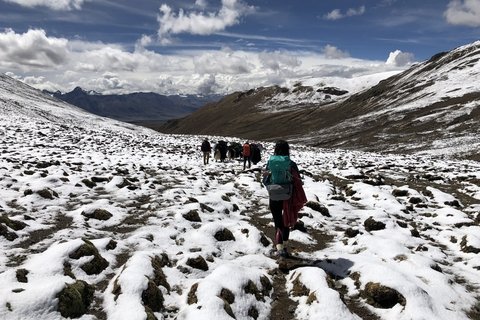
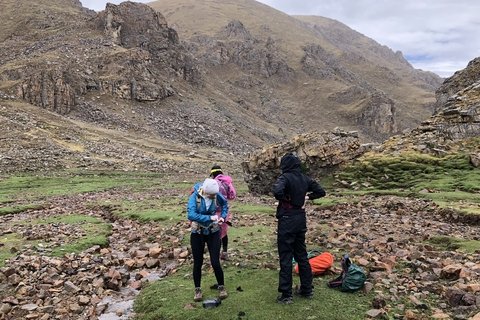
Classic trekking routes
Lots of treks from easy to strenuous, offering fantastic walking and stunning scenery, are available in Tibet. Trekking in Tibet gives a sense of peace, quiet, and conquest as you are one of the only few people on this world’s highest land. However, which trekking route to take really depends on your holiday duration, budget, and preferred level of hiking. Here we have collected the top 4 trekking routes in Tibet for you to review.
1. Mt. Kailash Kora Trek
Renowned as one of the world's greatest pilgrimage routes and with a 5630m pass to conquer, Mt. Kailash Kora attracts not only hundreds of pilgrims but also thousands of worldwide tourists every late April to October, especially around the Saga Dawa Festival (every April 15 of Tibetan calendar/late May or June of the Gregorian calendar). With an average elevation above 5000 meters, this 52KM’s circuit trekking tour is a real test of your mind and spirit. In addition, it is a wonderful trek satisfying you spiritually, culturally, and physically.
The local Tibetans normally complete the whole Kora in one hard day, however, for a comfortable trek, it is advisable to complete it in 3 days. Travelers mainly start their trip to Mt. Kailash directly from Lhasa or Kathmandu by a 3-day single-way drive to Darchen (where the trek begins). If time is limited, they will choose to fly from Lhasa to Ali (the nearest city) directly first, then have another day’s drive to Darchen. Yaks or porters can be hired at Darchen to help to carry your heavy works.
It is suitable for trekking along Mt. Kailash Kora from late April to mid-October as of the warmer weather in those months, but you should be always aware of the unpredictable weather and prepare well for it. Even in the warmest July or August, you might occasionally encounter extreme weather e.g. snow or strong winds.

Mt. Kailash pilgrimage circuit at a glance:
Distance: 52KM
Duration: 3 days
Starting point: Darchen (4675m)
Ending point: Darchen (4675m)
Highest point: Drolma-la Pass (5630m)
Difficulty: medium to difficult
Accommodation: camping or local monastery guesthouse
Permits: Tibet Entry Permit, Aliens' Travel Permit, Military Permit
Best time to trek: mid-May to mid-October
Brief daily trekking itinerary:
- Stage 1: Darchen (4675m) - Prayer square/two-legged’ Chörten Kangnyi (4790m) - Chuku Monastery (4820m) - Dira-puk Monastery (5080m), 20KM / 6 hours / 200m ascent;
- Stage 2: Dira-puk Monastery (5080m) - Shiva-tsal (5330m) - Drölma-la (5630m) - Zutul-puk Monastery (4820m), 18KM / 7-8 hours / 550m ascent/600m descent;
- Stage 3: Zutul-puk Monastery (4820m) - Barkha Plain - Darchen (4675m), 14KM/ 3-4 hours / 150m descent.
2. Ganden to Samye Trek
The Ganden to Samye trekking route, one of the most popular trekking routes in Tibet, is an ideal trekking route with a perfect combination of nature and culture. Along the trekking route, you will see beautiful lakes, streams, lush alpine forests and meadows, sporadic herders’ camp, tranquil Tibetan villages, age-old sacred sites, as well as two of Tibet’s greatest centers of religious culture and pass over 2 mountain passes over 5000m above sea level.
This route starts at Ganden Monastery, one of the six largest monasteries of Gelugpa and only about 60KM eastwards from Lhasa, and ends at Samye Monastery, the first Buddhist monastery in Tibet. The trekking journey usually takes 4 to 5 days. The trekking season runs from May to mid-October, while Summer could be wet but the mountains are at their greatest and wildflowers scatter everywhere. Pack animals can be leased in the villages of Trubshi and Hepu.
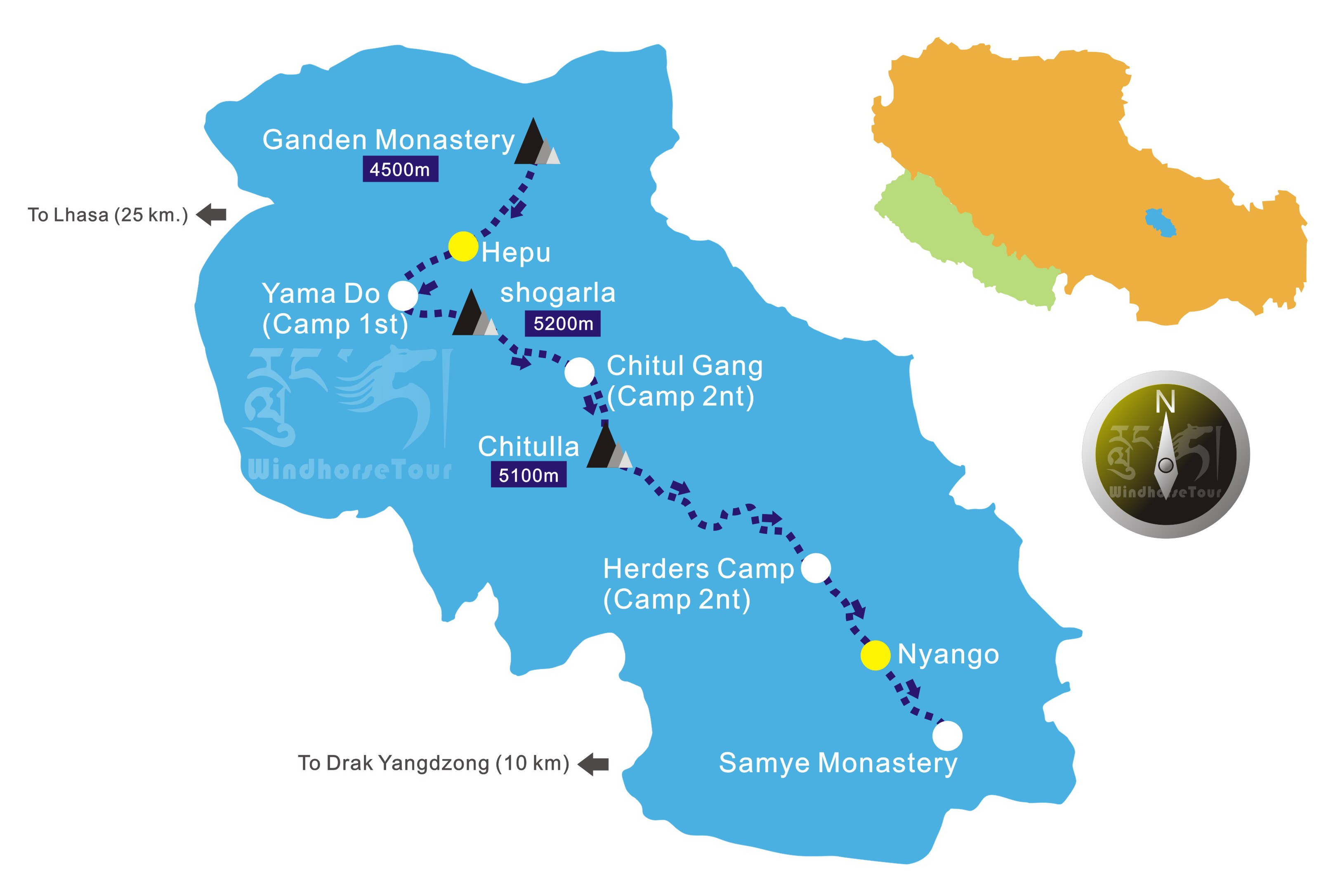
Ganden to Samye trekking route at a glance:
Distance: 80KM
Duration: 4-5 days
Starting point: Ganden Monastery (4190m)
Ending point: Samye Monastery (3630m)
Highest point: Shuga-la Pass (5250m)
Difficulty: medium to difficult
Accommodation: camping
Best time to trek: mid-May to mid-October
Permits: Tibet Entry Permit, Aliens' Travel Permit.
Brief daily trekking itinerary:
- Stage 1: Ganden Monastery (4190m) - Hepu (4240m) - Yama Do (4490m), 17KM / 5-6 hours / 300m ascent/450, descent;
- Stage 2: Yama Do (4490m) - Shuga-la Pass (5250m) - Tsotup-chu Valley (4980m), 10KM / 5-7 hours / 100m ascent/450m descent;
- Stage 3: Tsotup-chu Valley (4980m) - Chitu-la Pass (5210m) - Herders’ Camp, 14KM/ 5 hours / 300m ascent/400m descent.
- Stage 4&5: Herders’ Camp - Yarmalung Heritage - Samye Monastery (3630m), 39KM/ 10 hours / 1200m descent.
3. Tsurphu to Yangpachen Trek
Tsurphu to Yangpachen trek is an excellent choice for those who want to have close contact with the Tibetan herders and their rapidly disappearing semi-nomadic lifestyle. It is also a trek route nicely balancing the cultural and wilderness activities.
This rugged walk begins at Tsurphu Monastery, the head monastery of Kargyu Sect housing over 370 monks and located about 70KM westwards from Lhasa, crosses several rugged alpine valleys like Leten valley, Bartso valley before emerging into the broad and windswept Yangpachen valley. There is no doubt that you will be shocked by the alpine tundra, sweeping mountain panoramas, and significant monasteries along the route.
The best time for this trek is from mid-April to mid-October and the whole trek takes roughly 3-4 days. A well-acclimatization is a must before the trek as it is a high elevation trek exceeding 4400m for the entire duration and a maximum elevation of 5400m at the Lasar-la.

Tsurphu to Yangpachen trekking route at a glance:
Distance: 45KM
Duration: 3 days
Starting point: Tsurphu Monastery (4500m)
Ending point: Dorje Ling Nunnery (4474m)
Highest point: Lasar-la Pass (5400m)
Difficulty: Medium to difficult
Accommodation: Camping
Permits: Tibet Entry Permit.
Best time to trek: mid-April to mid-October
Brief daily trekking itinerary:
- Stage 1: Tsurphu Monastery (4500m) - Shupshading (4700m) - Leten (5090m), 11KM / 3-4 hours / 500m ascent;
- Stage 2: Leten (5090m) - Lasar-la pass (5400m) - Bartso (4950m), 15KM / 5-6 hours / 300m ascent/600m descent;
- Stage 3: Bartso (4950m) - Dorji Ling Nunnery (4474m), 15KM/ 4-5 hours / 150m ascent/150m descent.
4. Gyama Valley Trek
Gyama valley praised as ‘the most beautiful valley in the world’ and ‘one of the top ten classic trekking routes in the world’, is located on the eastern slope of Mount Everest. To admire its exotic scenery, the only ways are walking or riding horses or yaks, it is impossible to drive here. For the lofty trekkers, this trek is indeed a paradise, even it is arduous and challenging trekking requiring great stamina and physical fitness but it brings unique rewards. The deeper you step into the valley, the deeper you will be shocked by its exotic and picturesque scenery and its mysterious locals - Sherpa, Monpa, Lhoba who still live in their traditional ways.
Starting your Gama Valley trek at Chutang village/Youpa, passing through the virgin forests, crystal glaciers, vibrant meadows, and jade-green lakes, you will reach the Eastern Slope of Mt.Everest Base Camp. Along the route, you will have the chance to appreciate the epic vistas of Mt. Everest (8848m), Mt. Lhotse (8,516m), Mt. Makalu (8,463m), and other unclaimed majestic mountain peaks too. The entire trek is basically at an altitude above 4,500m.
Generally, the whole trek takes about 7 to 8 days. The best time to trek there is from May to June, September to October due to its warm and stable weather and high visibility. Usually, the trek route will be blocked by the heavy snow from December until the next April, making it difficult to reach. While July and August are the monsoon season with the most rain, the snow-capped mountains will be surrounded by clouds and fog, making them harder to be seen, however, the spectacular sights of the sea of clouds and the golden summit mostly occur in these 2 months.
Gyama Valley trekking route at a glance:
Duration: 7-8 days
Starting point: Chutang village (3650m)
Ending point: Lhundupling Village (3990m)
Highest point: Nangma-la pass(5344m)
Difficulty: Difficult
Accommodation: Camping
Best time to trek: May to June, September to October
Permits: Tibet Entry Permit, Aliens' Travel Permit.
Brief daily trekking itinerary:
- Stage 1: Chutang village (3650m) - Youpa (3770m) - Showo-tso (4677m), 10KM / 5-7 hours / 900m ascent;
- Stage 2: Showo-tso (4677m) - Showola pass(4900m) - Dolshang(Orchid valley, 4030m), 14KM / 7-9 hours / 300m ascent/900m descent;
- Stage 3: Dolshang (Orchid valley, 4030m) - Tsonang-tso (4320m) - Xialong Pasture (4400m) - Tangsung Viewing Platform (4510m), 12KM/ 6-7 hours / 500m ascent;
- Stage 4: Tangsung Viewing Platform (4510m) - Gama valley (4260m) - Badang (4310m) - Ega (4690m) - Paltang (4950m), 11KM / 6-7 hours 400m ascent;
- Stage 5: Paltang (4950m) - Eastern Slope of Mt.Everest Base Camp (5310m) - Paltang (4950m), 18KM / 8-9 hours / 360m ascent/360m descent;
- Stage 6: Paltang (4950m) - Ega (4690m) - Badang (4310m) - Tangsung Viewing Platform(4510m), 11KM, 5-6 hours, 400 descent;
- Stage 7: Tangsung Viewing Platform(4510m) - Tsosho-rim (5013m), 11KM / 6-7 hours, 500m ascent/500m descent);
- Stage 8: Tsosho-rim (5013m) - Nangma-la pass (5,344m) - Lhundupling Village (3990m), 21KM, 8-10 hours, 300m ascent/1360m descent.
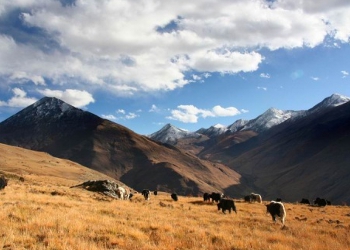
What to Bring for trekking in Tibet
Taking a trekking tour in Tibet with WindhorseTour, we will provide necessary camping equipment such as tents, mattresses, sleeping bags, simple cooking equipment including a fuel stove. For your personal packing, when planning your clothing needs for a trek, think of dressing in layers, as it not only can keep you warm but also can be removed to gradually prevent overheating. Below is a list of suggested equipment, clothing, and accessories for trekking in Tibet
1. Equipment
Footwear: Hiking boots should be waterproof and breathable, have thick soles, and be high enough to provide adequate ankle support.
Packs: You may have a large waterproof backpack for unnecessary clothing and other items storage and a small day pack to carry your daily essentials. The daily pack should have padded shoulder straps, a wide waist belt. Backpacks should have a cover against rain and dust.
Sleeping bag: A three-season (spring-summer-autumn), a mummy-style down or fiber-filled bag rated to about 5-10°F (about -15°C - -10°C). Usually, our agency will provide sleeping bags, while if you are very cautious about cleanliness, then you may bring a silk or cotton inner sheet.
Rain gear: The raincoat should be roomy, preferably mid-thigh in length, and have a waterproof hood. Rain pants can double as wind pants, high-quality coated nylon materials are the best.
Trekking Pole: For the hard trekking time also the wild dogs.
Knee pads: To prevent the knees from getting hurt while trekking.
Water bottle: One or two metal leak-proof quart or liter bottles. If you prefer hot water, then a thermal bottle.
2. Clothing
Thermal underwear: One or two pairs of long-sleeved tops and bottoms made from wool, silk, polypropylene, or similar synthetic fiber. Short-sleeved thermal tops are good on cool days while trekking. Avoid cotton long underwear.
Cotton underpants: 3-4 pairs
Socks: At least 3 pairs of wool/wool-mix socks, and several pairs of cotton socks. Hand-knit wool socks are available in Lhasa.
Shirts: 3-4 shirts / T-shirts with long sleeves.
Pants: Nylon Travel trousers or quick-dry pants (1 pair of loose-fitting wool or fiber-pile pants and 1 pair of lighter weight cotton or polyester blend pants).
Sweater or Fleece: Wool or wool mix with a high neck for extra warmth.
Jacket: a fiber pile jacket is ideal for trekking and evenings in camp.
Insulated coat with hood: A heavy-duty down or fiber-filled coat is usually not necessary from mid-May to mid-Sep. During the other months, most evenings you will want to wear a coat that can fit over bulky clothing.
Headgear: One wool or fiber pile ski-style cap or balaclava for warmth. A lightweight brimmed hat is good for sun protection. Inexpensive broad-brimmed felt and straw hats are sold in Tibet’s outdoor markets.
Scarf: Wool or silk is best or uses a fiber pile neck gaiter.
Mittens or gloves: Wool, pile, or polypropylene are best. Touchscreen gloves are highly recommended.
3. Accessories and Extras:
Many of the following items are optional and they can be purchased in Lhasa, it is not necessary to bring them from home. Besides, don’t try to bring everything, as you would need a herd of yaks to carry it all, generally, each yak can carry about 30-40KG's luggage.
Pocket knife: Swiss-army style is best.
Personal medication: Some personal medicine for the regular cold and diarrhea, high altitude medicine.
Gaiters: Good for winter treks or wet trail conditions during the rainy summer months.
Insulated booties: Down or fiber-filled, for the colder months.
Waterproof groundsheet or poncho: Handy for laying out gear on wet ground.
Utensils: Have your own pair of chopsticks, fork, and bowl for the trekking dinner.
Drinking cup: To use it for some instant coffee/milk powder/soybean milk powder at the trekking breakfast.
Toilet paper: Stock up before the trek starts. Preferably pack it out or burn it after using it.
Cigarette lighter: Superior to matches when burning used toilet paper in windy conditions.
Toiletries: Use a small stuff sack to hold your toothbrush, toothpaste, comb, soap dish, dental floss, skin moisturizer, and perhaps a mirror.
Towel: Two small, thin, and quick-dry towels are preferable to one thick towel.
Flashlight: A headlamp is ideal for camping. AA and D batteries are the most common in Tibet and China but of poor quality. Bring extra alkaline from home.
Plastic bags: A few of each size, from sandwich-style to strong trash bags.
Sunglasses: Necessary for Tibet’s bright, high altitude sunlight. Darker glacier-type glasses with side hoods are necessary for the mountains and after fresh snowfalls.
Sun creams and lip balm: Sunblock with a 30SPF rating or higher is recommended. Lip balms prevent burning and chapping.
Journal, reading book, writing materials: For quiet moments.
Money pouch or belt: For your passport, money, and valuable papers.
Snack food: Nuts, chocolate bars, granola bars, dried fruit, hard candies, meat or fruit jerky, and flavored drink mixes are much-appreciated trail treats.

Interested in a trekking tour in Tibet, check out our Tibet trekking tour to get some inspiration and contact us immediately to share your requirements and interests, then we can help you to design your unique Tibet trekking tour.


